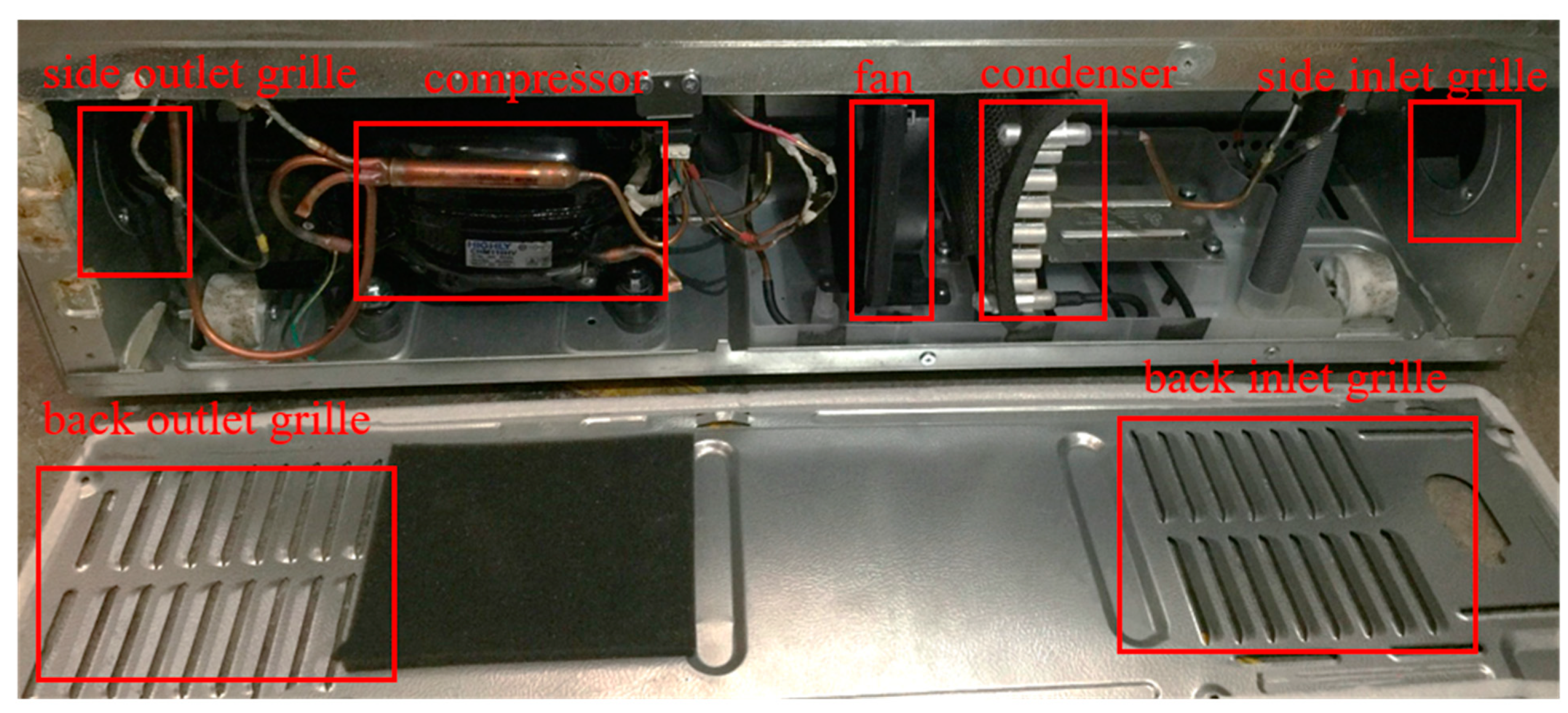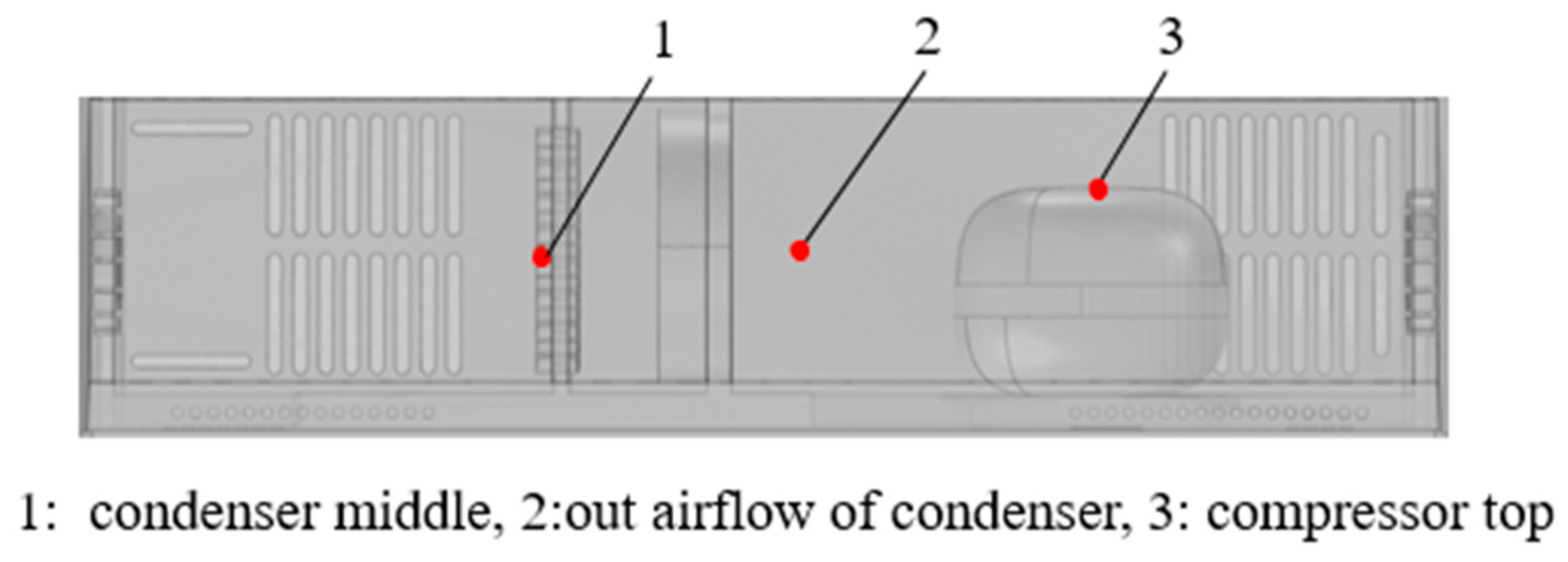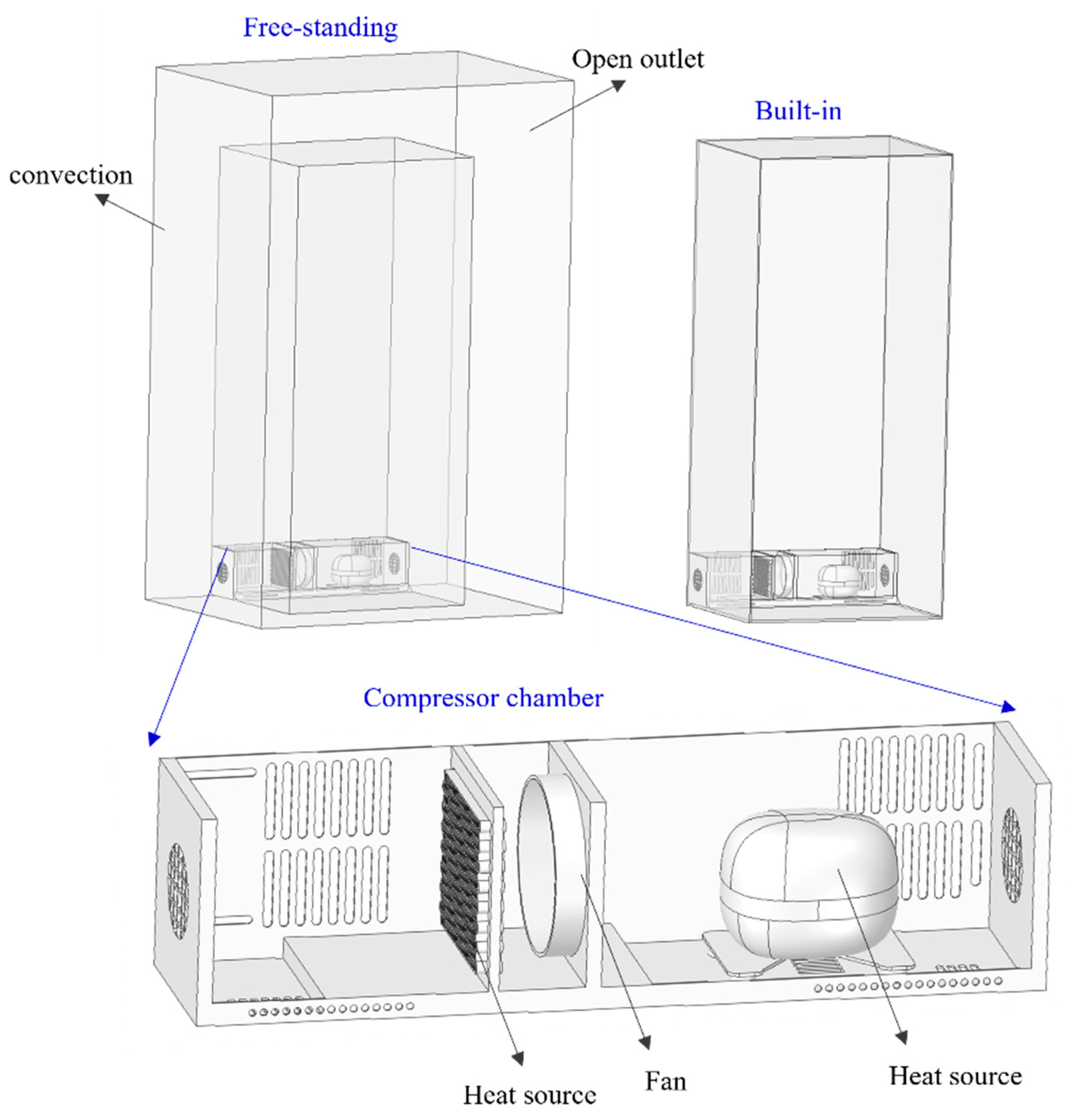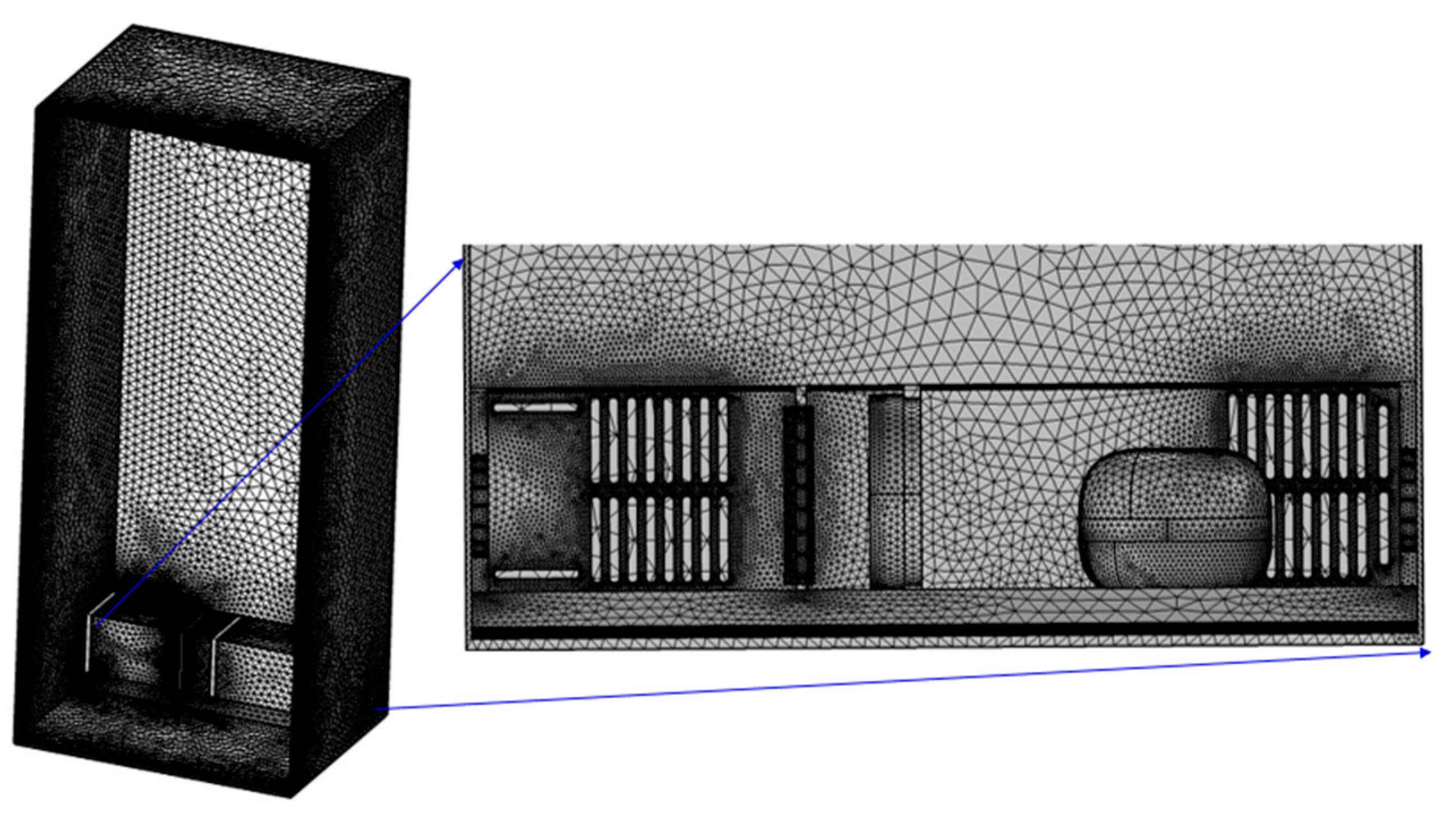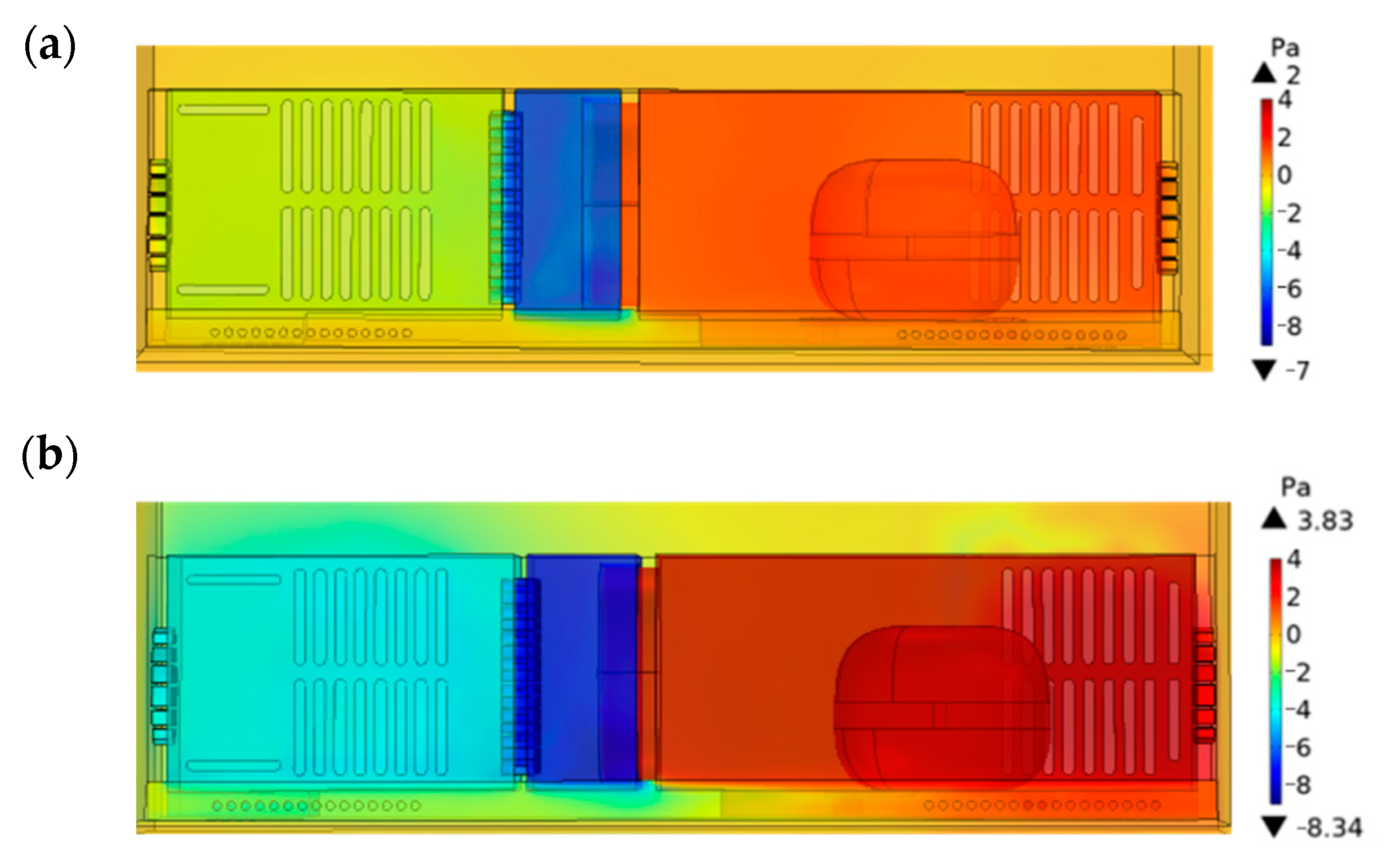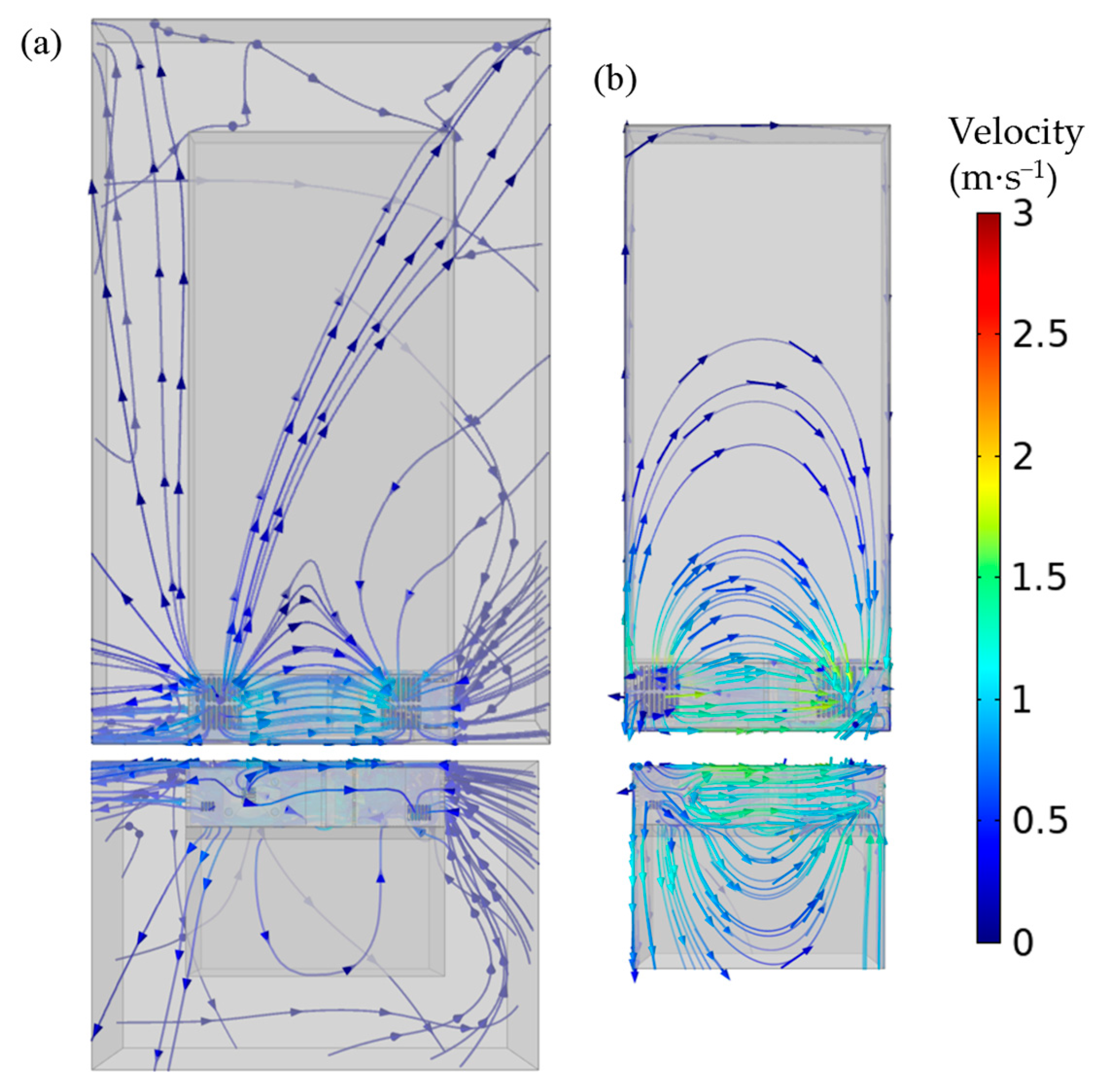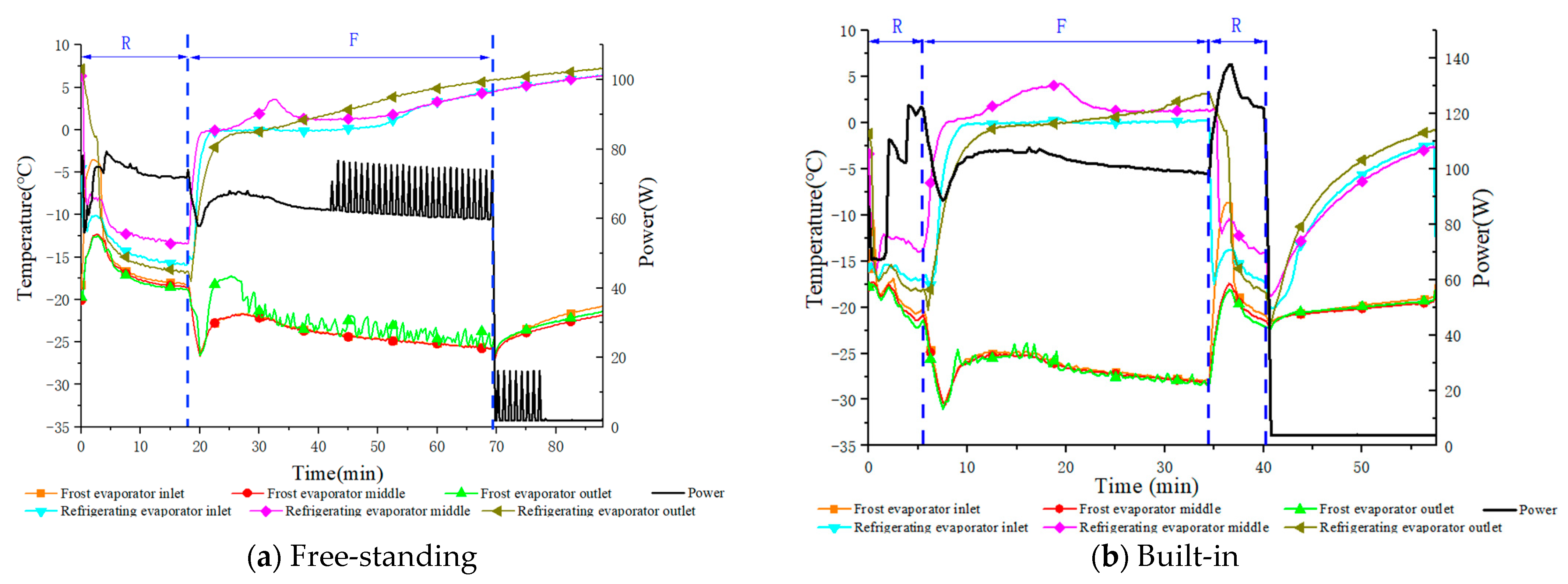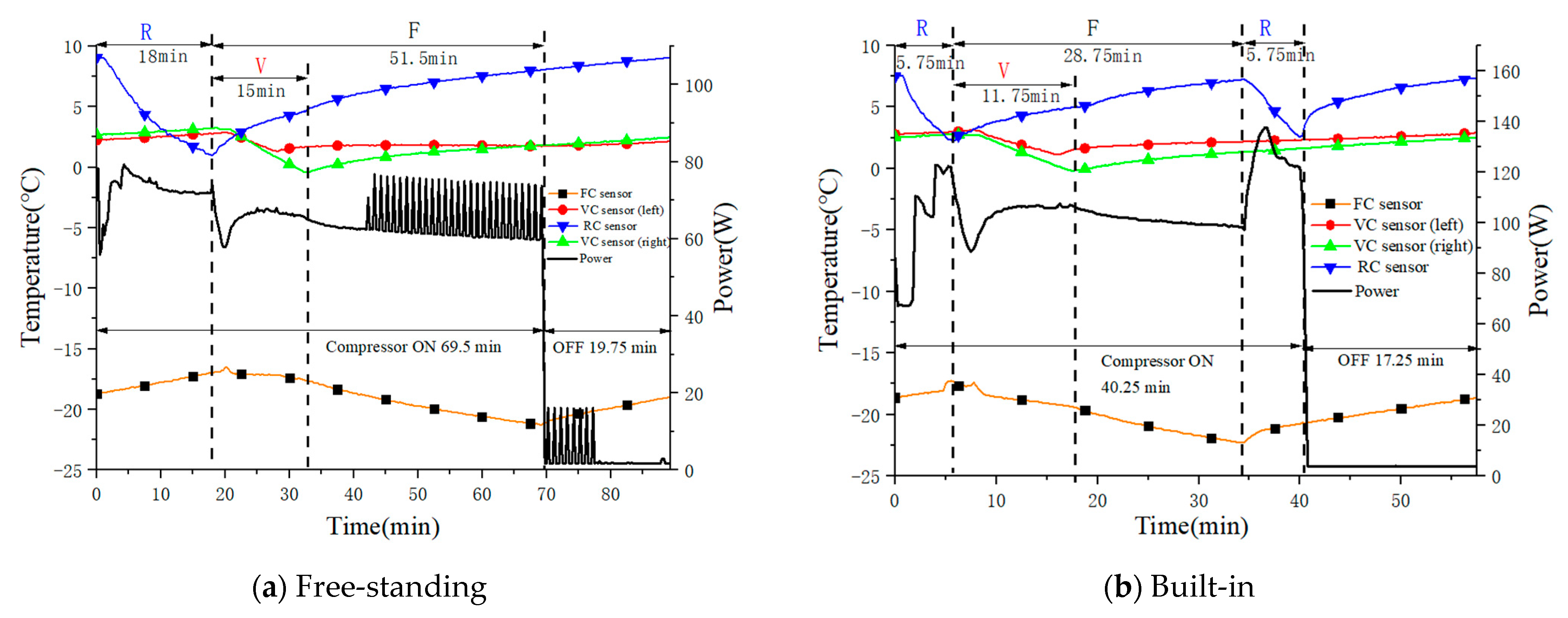1. Introduction
As the integration of home appliances and decoration becomes popular, the built-in refrigerator has been welcomed by users because of its beauty and compactness. In the limited kitchen space, the built-in installation (i.e., the refrigerator is built in the cabinet and only the door of it faces the external environment) not only solves the problem of insufficient usable space, but also makes the appearance of a high-end refrigerator more aesthetic and advanced. The built-in refrigerator, however, has a great problem in heat dissipation. The poor heat dissipation condition can affect the refrigerator working performance, increasing its power consumption. Moreover, it may cause the compressor to overheat and even shut down, resulting in serious safety problems. Therefore, solving the problem of heat dissipation deterioration has become the primary premise of built-in refrigerator development. At present, the built-in refrigerator is still in the rising stage and has significant growth space, which is also the reason why more and more enterprises are beginning to develop built-in kitchen appliances.
The condenser is one of fundamental components of a refrigeration system. It dissipates the heat absorbed from the freezing zone into the surroundings. The heat transfer effectiveness of a condenser has a great influence on power consumption. Ghadiri and Rasti [
1] experimentally studied the effect of various parameters on the energy consumption of household refrigerators and found that the capacity of the condenser to give off the heat from the refrigeration cycle is the most important parameter, and by increasing the condenser heat removal capacity, the energy consumption truly reduced by 23.6%. Some relevant studies have been carried out on the heat dissipation problems of the household refrigerator condenser, including the influence of the airflow field around the refrigerator, the condenser structure, and the PCM (phase change material) on heat dissipation. Kruzel et al. [
2] also reviewed the current research trends of working fluid selection in compact condensers by using cooling zeotropic mixtures.
For the influence of the airflow field around the refrigerator, Zhang et al. [
3] applied an outer foam ring and central foam to improve the airflow distribution around the condenser to enhance the heat transfer between the airflow and condenser. As a result, the refrigerator energy consumption was reduced by 2.37%. Bassiouny [
4] and Agilis and V. [
5] studied the effect of space surrounding the condenser of a household refrigerator on its heat transfer efficiency numerically and experimentally. Their results showed that having enough surrounding space width leads to an increase in the external heat transfer coefficient and a decrease in the temperature of the air flowing vertically around the condenser coil. Afonso and Matos [
6] studied the thermal radiation effect that may cause an overheating of the refrigerator and decreased the average air temperature inside the refrigerator by placing a radiation shield over the condenser surface. Devle et al. [
7] investigated the effect of the gap and baffle/flap of the built-in refrigerator on the performance effectiveness of the machine compartment by CFD simulation, but the influence of condenser heat dissipation on refrigerator performance has not been experimentally studied. Belman-Flores et al. [
8] carried out a parametric study of a wire-on-tube condenser used in the household refrigeration industry and analyzed the effect of varying the main geometric parameters such as tube and wire diameters, and wire and tube pitches.
For structural optimization research, Gönül et al. [
9] investigated the effects of wire diameter, tube diameter, wire pitch, and other structural parameters of wire-on-tube condensers for different air velocities numerically and experimentally. Ameen et al. [
10] analyzed a wire-on-tube condenser under varying operating conditions to predict the effects of condenser parameters. Microchannel heat exchangers are welcomed because of their compactness and charge reductions. Some comparative studies have been conducted by analyzing the experimental results of microchannel and conventional wire-on-tube condensers [
11,
12,
13]. Ling et al. [
14] and Knipper et al. [
15] studied the effects of geometrical design and environment conditions on the thermal performance of micro-channel condensers.
For PCM application research, Cheng et al. [
16,
17] proposed a new household refrigerator equipped with heat storage condensers and increased the energy efficiency by 12% approximately. Yuan and Cheng [
18] also optimized this kind of refrigerator with heat-storage condensers by the multi-objective optimization method they proposed. Maiorino et al. [
19] applied a PCM within the cabinet of a refrigerator and the experimental results showed that the introduction of the PCM led to a reduction in the temperature gradient within the cabinet and to an extension in the OFF time of the compressor.
Seen from the literature above, there are plenty of researchers focusing on the influencing factors of condenser performance. However, the installation conditions of refrigerators, such as free-standing or built-in conditions, has rarely been taken into account in the above-mentioned studies. In this paper, a fan-supplied condenser and its refrigerator performance deterioration caused by the built-in configuration are studied experimentally and numerically. A refrigerator simulation model is established and verified to study the ventilation and heat dissipation performance of the condenser. The short-circuited airflow is defined and quantified. Two main short-circuit paths of the airflow are also located. The overall refrigerator performance is also comparatively studied through experimental results. The compressor ON-time ratio reduces by 8% but the average power during the compressor-on period increases by 56.9%, finally increasing the energy consumption by 43.4%. This study also provides some guidance for further heat dissipation optimization of built-in refrigerators based on the airflow field analysis.
